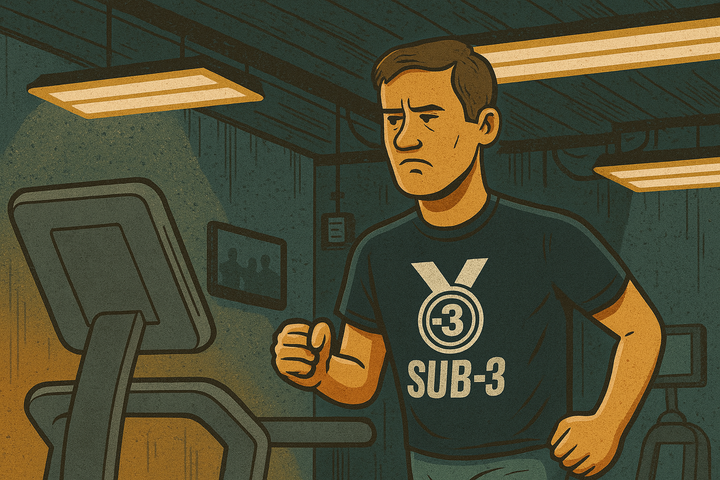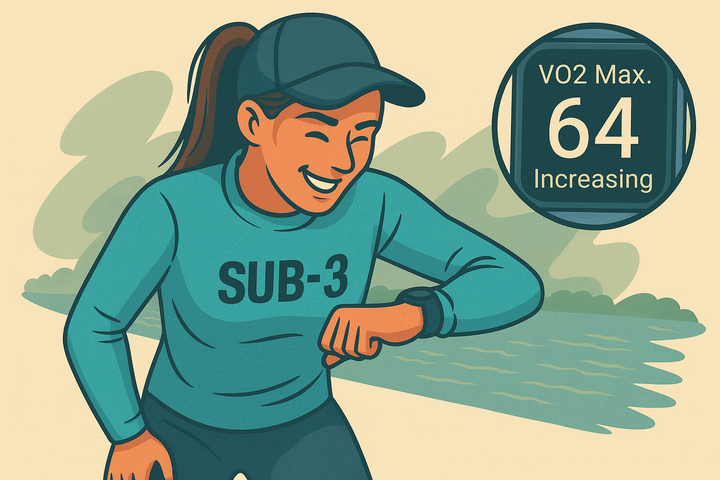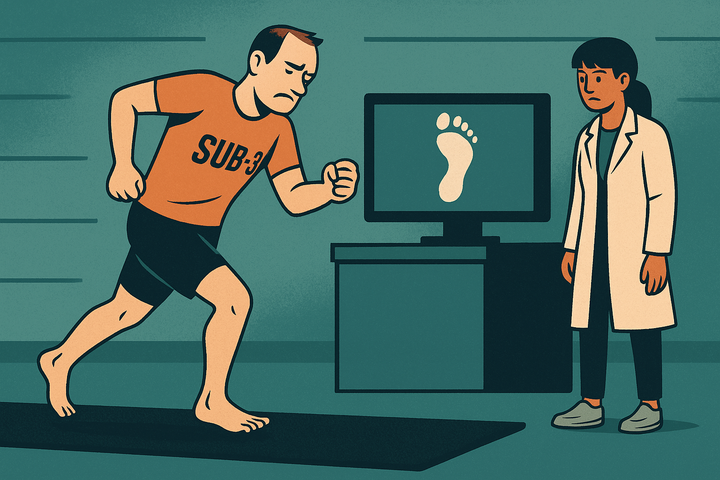Can parkrun help you achieve sub-3?
How a free weekly 5K can sharpen your speed, test your tactics, and fit seamlessly into a sub-3 marathon training plan.

Parkrun isn’t a race — or so the script goes. But if you’re chasing a sub-3 marathon, the weekly 5K can be a surprisingly valuable training tool. In fact, for many runners at this level, it’s quietly become part of the rhythm of marathon life.
I didn’t always feel this way. I stepped away from parkrun for a time — partly in protest at the decision by head office in 2024 to remove key performance stats (like sub-17 finishes) from the site, a move that alienated a significant number of people in the running community. While the motivation was, in my view, a misguided attempt at inclusivity, it did damage to parkrun’s credibility among some club runners and marathoners. At the time of writing, the stats still haven’t returned — but encouragingly, the organisation’s new leadership has suggested parkrun may begin to show more appreciation for runners who value progress, data, and performance in future.
But that aside, I’ve found myself drawn back. A new event opened practically on my doorstep at Oaklands College in St Albans, and it’s now part of my weekly routine. I don’t treat it as a race. Most weeks I use it as a controlled tempo at the start of a long run — jogging there to warm up, running the 5K strong-but-steady, and then heading out for another 20–25km afterwards. It adds a jolt of adrenaline and social energy at the start of the run — and makes the remaining miles feel smoother by comparison.
Other times, I’ve used it to simulate racing. Although parkrun will always insist “it’s a run, not a race”, the front pack tells a different story. It’s not unusual to see Vaporflys or Adios Pros on the start line, and the effort can be sharp. In the years before I began placing in competitive races, I sometimes found myself in podium positions at parkrun — and it taught me a lot. The mental shift from “running fast” to “racing to win” is huge. Leading changes your mindset. Parkrun gave me space to practise that — to test front-running tactics, spar with others in friendly final sprints, and learn when to push and when to wait.
Of course, you can’t race every week. And the risk of going too hard on a Saturday morning is real. I’ve had coaches warn against parkruns for that very reason — if you run flat-out, recovery can take days, and you may lose valuable training time. If you’re deep in a block or heading into a big race, it may be best to skip it entirely. I know runners who’ve sensibly volunteered on taper weekends instead — marshalling or handing out tokens to stay involved without putting anything at risk.
And if you're in the UK and worried about a slow parkrun affecting your Run Britain ranking — don’t be. Only your top five performances count towards your handicap score, so an easy or recovery-paced effort won’t hurt you. I was relieved to learn that myself. It means you can treat parkrun however you need to that week — whether it’s a full-tilt test or a jog round with friends.
That said, the benefits are hard to ignore — especially for those still building towards sub-3. A hard 5K pushes you well above marathon pace, which helps develop VO₂ max, lactate threshold, and neuromuscular conditioning. It trains your legs to move faster, your lungs to cope under pressure, and your brain to stay calm in discomfort. Parkrun also gives you the chance to repeat the same course — a useful way to benchmark your fitness. This was, in fact, part of its original purpose when it launched in 2004 as a free weekly time trial for club runners at Bushy Park in London. Though the ethos has broadened, that core value remains.
Most importantly, parkrun is a sandbox. A place to practise tactics, experiment with effort, and occasionally just enjoy the thrill of running hard with others. While you can’t control who turns up — and you shouldn’t stake your self-worth on whether you finish first — it’s not unusual for a 19-minute runner to cross the line ahead of the pack. And it’s rarely about the win. I’ve let people take the tape on milestone runs or birthdays (though I’ve made them work for it).
It’s all part of the rhythm. For those who can learn to hold back when needed — and run smart rather than always hard — parkrun can become a staple part of a long-term sub-3 lifestyle. Just keep your A race in mind. I know someone who nearly twisted an ankle doing a cross-country parkrun the day before the London Marathon. Don’t let a local battle cost you the race you’ve spent months preparing for.
After all, there’s always another parkrun next week.
5 ways to use parkrun for sub-3 training
1. Tempo before a long run
Use parkrun as a strong but controlled start to your Sunday-style long run. Add distance before and after to get the benefits without disrupting your overall rhythm.
2. Practise racing — without the pressure
Test tactics, experiment with pacing, and get comfortable leading or chasing in a low-stakes environment. The psychology of racing can be sharpened here.
3. Track your fitness over time
If you run the same course regularly, parkrun can act as a time trial to measure progress — especially when training blocks feel grindy.
4. Build race-specific conditioning
Running well above marathon pace for 5K can improve VO₂ max, leg speed, and mental resilience — all crucial for the final 10K of your goal race.
5. Know when to volunteer
If you’re tapering or tempted to overdo it, skip the run and marshal instead. You stay connected to the community — and keep your goal in focus.
Enjoyed this article? Help keep Sub-3 running — support us with a coffee.
To help fund the running of the site, Sub-3 is an Amazon Associate and earns from qualifying purchases. We only recommend gear or kit that has genuinely helped in our own running and that we believe is worth considering.



